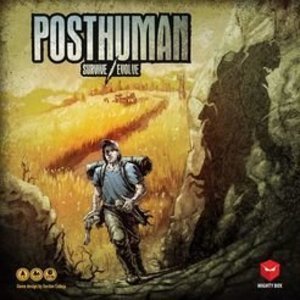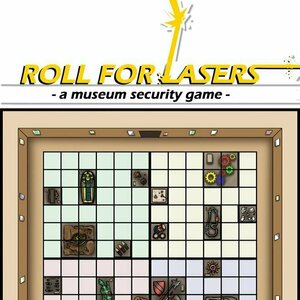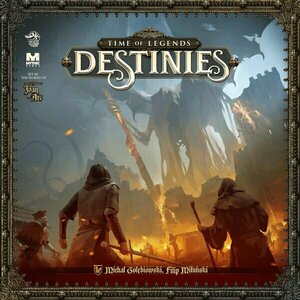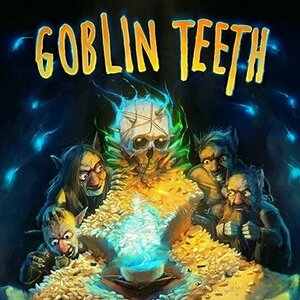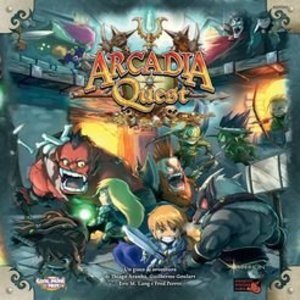
Arcadia Quest
Tabletop Game
In Arcadia Quest, players lead guilds of intrepid heroes on an epic campaign to dethrone the vampire...
Boardgames Miniatures CMONgames 2014Games

Dinosaur Island
Tabletop Game
In Dinosaur Island, players will have to collect DNA, research the DNA sequences of extinct dinosaur...
Boardgames JurassicParkTheBoardgame BooksintoGames WorkerPlacementGames
Purple Phoenix Games (2266 KP) rated Jamaica in Tabletop Games
Sep 22, 2021
Jamaica a dice-chucking, simultaneous action, hand management racing game set in the year 1708. Player assume the roles of pirate captains and crew traveling around the island of Jamaica deciding the best courses to take and the greatest booty to plunder and bring back across the finish line.
To setup, place the main board in the center of the table. Each player chooses a pirate captain and receives all components of that color. In addition each pirate will receive 3 doubloons, 3 food tokens, and 3 cards drawn to begin their journey. Consult the rulebook to setup the rest of the components, give the starting player the token and dice and the game may begin!
On a turn the starting player will roll the two action dice and places one on the morning action space and one on the evening action space. Each player then chooses a card from their hand of three to play. Once the starting player plays and resolves their card, each other player will do the same. Whatever number is on the morning action die corresponds to the resource or movement amount to be placed in hold or moved on the board. For example, if the dice values are 4 and 3 for morning and evening, respectively, then the players will gain 4 of whatever resource or movement is shown on the left side of their card and 3 of whatever is shown on the right side of their card. There are special rules for placing resources in holds and for landing on certain spots on the game board, which I will have you discover when you play your first game.
On occasion pirates will end their movement on a space already containing another pirate’s shipeeple and, as is customary, a battle ensues. This involves both players choosing the amount of gunpowder (resource) they wish to add to the roll of a combat die. For example, if Laura attacks Josh at the starting line (because one had moved backward and then forward again) and dedicates three gunpowder to the combat and rolls a 4 on the combat die her total is seven. Josh then dedicates his five gunpowder to the combat and rolls a 5 as well for a total of 10. Josh wins and can steal items in one hold space on her ship, steal a treasure card earned at pirate lairs, or give a cursed treasure card to Laura.
Play continues in this fashion until one player crosses the finish line at Port Royal. The round finishes and then players tally points. Points are earned for board space number where their shipeeple finished, doubloons in holds, and positive VP treasure cards. If any cursed treasures are held they are negative VP cards and will be deducted from the player’s total score. The player with the most VP at the end of the game is the winner of the race and thus has bragging rights until the next annual race is held.
Components. The components in Jamaica are stellar, and the art is incredible. Every single component in the box is just wonderful to behold and to handle during play. I especially enjoy the art style employed, even down to the graphic design of the rulebook. Every piece seems to have love and affection poured into them and that is partly why Jamaica is so highly regarded among many (currently ranked 494 on BGG in February 2021).
Another reason pirates dig this (haha see what I did there with the digging as if referencing the hiding of booty… nevermind) is because the gameplay is so smooth and enjoyable. Yes, I have been witness to a game where two players made it not three spaces from the start when the game ended. It was ridiculous and unforgettable. Yes, there are points in the game where you MUST travel backward in order to continue forward in the game. Yes, much of what happens in the game is a result of dice rolls, but choosing the best cards to use in order to maximize the dice results is the crux of the game. No pirates have special abilities, so it is an even playing field, and I love that.
The game is absolutely stunning on the table, easy to pick up and play, and offers so many wonderful memories to be made each time you play. Purple Phoenix Games emphatically gives this one a booty-ful 19 / 24. If you are looking for that niche pirate-themed racing game with treasure stealing and dice rolling, this is it. I have found the perfect game for that slot in your collection. If you are looking for a fun racing game that also includes battles and possibilities of incremental progression, this is it. I can’t speak highly enough about Jamaica, and the only reason it scores a 5 for me instead of a 6 is because I simply cannot play it enough to increase its score. It hits all the buttons for me, but I fear it does not have the wider interest in my group to reach my Top 10.
Purple Phoenix Games (2266 KP) rated Roll for Lasers in Tabletop Games
Aug 3, 2020
Roll for Lasers is a one-page roll and write game where the winner is the player whose company can hit placed targets more often (Victory Points) with lasers. Targets and mirrors will be placed all over the museum floor, so utilizing proper strategy, well-timed re-rolls, and special actions will see the winner awarded the security contract.
DISCLAIMER: We were provided a prototype copy of this game for the purposes of this review. These are preview copy components. Also, it is not my intention to detail every rule in the game, but to give our readers a general feel for how the game plays. You can back the game through the Kickstarter campaign launching August 4, 2020, order from your FLGS, or purchase through any retailers stocking it after fulfillment. -T
Setup for Roll for Lasers is simple. Give every player a pen (or erasable marker for laminated sheets) and 6d6. Decide as a group which three special actions to use for the game and you are ready to begin!
NOTE: Though I appreciate the USPS for everything they do, check out the picture below. I mean, come on. It didn’t hinder our play at all, but sheesh.
Play will commence in rounds. Each round will have three phases. The first phase is rolling for targets. Using the prescribed starting corner, players will roll all 6d6 and use these results to create x- and y-axis pairs to plot up to three targets in their mini grid. These are depicted by circles. The next phase is placing mirrors, and the players will again roll all 6d6 to be used to place up to three mirrors, depicted by diagonal lines. Finally, players will again roll all 6d6 to find either three singular dice or combinations of dice to fire a laser from the side or bottom of their grid in a straight line. For all targets the laser passes through, count 1VP. Each mirror encountered will alter the pathway of the laser, and by the end of the game lasers will be bouncing all over the museum. Play continues for three or four rounds (depending on player count) and once the last round ends, players count up VP to determine the winner!
Components. Again, we were provided a prototype copy of the game for this preview, and at this point I do not know what, if anything, will be changing as a result of a successful Kickstarter campaign. However, we were provided a nicely laminated sheet and a dry-erase marker to use. The sheet is laid out well, and the art is interesting without being in the way at all. Since Glass Shoe Games sent us an orange dry-erase marker (GREAT color choice btw) I borrowed the 6d6 from Roll Player because I knew I would find about a thousand d6 in that box. So components are minimal, and that’s quite all right with us this time.
Roll and write games are still popular now, and I, for one, am quite excited for that to be the case. I love being able to pull out a few dice, explain a few rules, and then get to playing. Roll for Lasers certainly delivers when I feel I have about 5-10 minutes to play something but still want a thinky experience. Rolling the dice and then determining which pair or combination of dice to use can get a little burdensome with AP-prone players, but being able to place the perfect mirror to foil an opponent, or adeptly using one of the special actions (like the triple-point target) is very rewarding. What I have also found with this is that all players are in the game until the very end. As you will see below, in my play against my wife I was behind for the first three rounds, but that last round was super robust for me and I finished way further ahead.
I love games that can be fun without having tons of components (I love games with tons of components too, don’t get me wrong), and Roll for Lasers is a great example of this. I have had a great time playing this every time, and can certainly see myself pulling this out a lot once game nights can safely return to normal. If you are missing a fast minimal roll and write for your collection with an interesting theme, consider backing or ordering Roll for Lasers.
Purple Phoenix Games (2266 KP) rated Destinies in Tabletop Games
Jan 29, 2022
Destinies is a hybrid app-driven adventure board game for one to three players. In it, players will be choosing their characters and how to play them, along with the path of their individual destinies across several campaign scenarios. When playing multiplayer, the player who completes their destiny first will win. When playing solo (which is also amazing), the player wins when they successfully complete their destiny.
DISCLAIMER: We are using the Kickstarter version of the game. We do have the expansions from the KS campaign, but will not be using those for this review. Also, we do not intend to cover every single rule included in the rule book, but will describe the overall game flow and major rule set so that our readers may get a sense of how the game plays. For more in depth rules, you may purchase a copy from the publisher directly or from your FLGS. -T
Usually I list out the steps to setup a game in this section, but there are so many little items and steps to be taken that I will simply show you, the reader, how a scenario may look once setup. The app will instruct players how to create their character’s stats and which map tiles should be placed out initially. Typically, though, each player will receive a player board, Destiny card (with their character headshot on one side and their Destiny choices on back), two main dice, three effort dice, and one gold coin. Once setup, the app will drive the story along and the players will be rolling dice and making choices in order to win the game or scenario.
Each player will be given their Destiny card with two distinct Destiny paths on the backside. These paths correlate with the current scenario, and the player will be able to choose one of the two given paths to help move their games forward. However, sometimes players will switch their Destiny mid-game due to several factors including successes on previous tasks or current inventory. The only way to win the game is to complete a Destiny, so staying on track is paramount in this open sandbox game – it is incredibly easy to become sidetracked and lose sight of specific tasks to be performed.
Each turn a player may move to a new tile, to previously-explored tiles, or points of interest on specific map tiles. These points of interest could be unique characters to be visited, or more general spaces on the tile represented by tokens. Sometimes visiting a POI (point of interest) will have the player rolling dice to complete tests, initiating trade with the POI NPC, revealing information about their distinct Destiny, or even issuing side quests. Players take their chances by visiting a POI because only one may be visited on a turn. Once a player has moved and visited a POI, their turn is over and the next player’s turn begins.
The most interesting aspect of this game is the experience tracker and results of tests. Player stats are divided between Intelligence, Dexterity, and Power (Strength for my D&D readers). These stats are constantly in flux due to tests and experience, and levels range from 1-12+ on the player board. A player will roll both main dice and any effort dice they wish on each test, and the total result is compared to the discs present on the main player board. One success is counted for each disc’s value equal to or below the rolled result. For example, if the roll is a 6, and the player has a disc on 3 and another on 6 the player counts two successes. Effort dice add values to the rolled result, and one side of these dice depict a star, which counts as one success. Throughout the game players will be moving their skill marker tokens (discs) up and down the tracks. Sometimes this is due to a test being failed or succeeded, but sometimes experience tokens are earned. A player may improve their skill levels by two total values on the tracks for each experience token discarded. Players may choose which tracks, and may maximize their character’s skill or spread out the experience across multiple skills.
Play continues in this fashion of referencing the app for story and plot items, players working toward completing their Destinies, and adventuring across the land rolling tests and improving skills until one player finishes their Destiny and wins the game!
Components. As always, I am going to be honest here by stating I believe that Destinies packs the box with the best components I have seen in a game. The multi-layered insert is perfectly formed and well-thought out, all the cardboard tokens are super-thick, the dice are so fun to handle and roll, the cards and other components feature incredible artwork, and did I mention there’s about a thousand minis in this game? I am reluctant to even call some of these things minis as they are large and in charge for SURE. I have zero complaints or comments on the components present in Destinies. Lucky Duck knocks it out of the park once again. Incredible.
I actually backed this one on Kickstarter just because it comes from Lucky Duck Games. I had played Chronicles of Crime and loved it, and just wanted to try something different but using a similar system. Typically I don’t keep up with the comments and updates to a game I have backed because I enjoy being surprised by the product that arrives at my door. Destinies was certainly a surprise to me, and I have been kicking myself in the butt for not getting it to the table the very first day I received it.
Destinies is my favorite Lucky Duck Games title, and that is saying a ton, as I rave about every game of theirs I have played. I hope you all back me up here, and if you haven’t yet tried this one, I hope you visit your closest friend or board game cafe that owns it. The tutorial scenario is great, and the campaign scenarios have been awesome so far. Okay, yes, when I first played it with Laura, my wife made several comments about it being a 3 hour game, but once that first one is completed, the subsequent plays run much smoother.
What I love so much about this is how indefinitely expandable it is. Most of the components are multi-use (akin to all the character cards in the Chronicles of Crime games), and can be used in campaign after campaign. The drawbacks I see for this, though, is any sort of waning interest in it forcing designers to abandon plans to create more scenarios. Could a new scenario pack be an acceptable expansion versus a large expansion box with oodles of new components and minis? I think so, but I am no designer. Could the Millennium Series treatment be given to Destinies? Absolutely! This system does not need to be played in a medieval fantasy world. It could be molded to almost anything, and that gives me excited shivers over the future of this game.
If you are anything like me and have now embraced the hybrid gaming trend, I highly recommend Destinies. I plan to also review all the expansions in the near future, so do look out for those, but please do yourself a giant favor and pick up Destinies. The excellent storytelling, great components, and just amazing fun helps Purple Phoenix Games give this one a perfectly deserved 12 / 12, and a Golden Feather Award! I can’t stop thinking about it and how I would play it differently next time, and hopefully after I have played through the expansion material I will be able to restart from the very beginning with different characters and choices. It’s a sign of a great game when I can’t stop thinking about it, and I do believe Destinies currently is knocking at the door of my Top 10 Games of All Time. No, it’s there. It’s totally there. TOP 10 BABY!!
Purple Phoenix Games (2266 KP) rated Goblin Teeth in Tabletop Games
Nov 5, 2019
Goblin Teeth is a fantasy take-that, auction, set collection, dice and card game. Each player is a goblin attempting to impress the goblin boss enough to become the right hand gobbie by offering a collection of items that the boss enjoys.
DISCLAIMER: We were provided a prototype copy of this game for the purposes of this review. As this is a preview copy of the game, I do not know if the final rules or components will be similar or different to what we were provided. -T
To setup, create the offering mat by randomly drawing a red and blue offering card to be placed in their respective locations. Shuffle the Cheat cards and Item cards into separate decks. Each goblin player chooses a set of three matching dice they will use throughout the game. Give each goblin one Cheat card to begin their collection. From the Item cards, place as many Items face-up as the number of players and one more face-down at the end of the row near where the sacrifice altar will be placed. You now have your offer row for the first round and are ready to play.
Before the round begins, all players will roll all three of their dice simultaneously. These dice represent your bid amounts for the Item cards on display (including the face-down Item). Whomever is in possession of the first-player marker will take their turn first. This goblin may choose to play any number of Cheat cards in their hand, and then must place a die on an Item card or into the altar. These Item cards feature items to be collected and used to satisfy an Offering card – like skulls, goblin teeth, glow worms, and others. By placing a die on an Item card, a goblin is casting their bid. By placing a die into the sacrificing altar, the goblin is instead giving up a bid die in exchange for drawing a Cheat card (which can be very powerful). Once the die is placed, the next goblin in clockwise order can take their turn following the same order of operations. The goblin who wins the face-down Item card becomes the new first player and receives the first player token. A new round can now begin by laying out new Items and rolling all dice simultaneously.
The game continues in this fashion until one sneaky goblin has all the Items they need to satisfy one of the Offering cards (or the pre-printed space on the Offering mat). There are dice placement rules and Cheats-a-plenty that I did not describe at all, but per the disclaimer, you can back the game or purchase from your favorite board game retailer (naturally, your FLGS). All goblins then tear each other to shreds over jealousy and greed. Ok, I added that last bit myself, but it should go into the rules. Just sayin’.
Components. Again, this is a prototype version of the game and some components may (and probably will) change over the course of a successful Kickstarter campaign. That said, I will comment on what I can here. The physical components themselves are fine for a prototype game. The cards are big tarot cards that are fun to handle. I hope they keep that size. The first player token in this is a green translucent plastic meeple that I’m sure they will be upgrading during the campaign. Similarly, the dice will more than likely see an upgrade (I am totally projecting here, I have no information on any future plans for components). What needs very little upgrading is the art on the cards. The card backs for the Cheat and Item cards feature an excellent logo (I hope) for the game, and the art on the Item cards are clear and really really good. I hope the art style doesn’t change as the art is amazing here. The Cheat cards look good, are clear, and although they feature several different fonts, I was not at all ever turned off by the presentation.
So here are my thoughts. Goblin Teeth is an excellent game of outbidding your opponents, double-think, and Cheating your way to victory! I absolutely adore this game. Without those Cheat cards it would still be decent, but those Cheats are what make this game special. Being able to play as many Cheat cards as you want on your turn, with some of them being good and some bad, but being able to place them on yourself or your opponents is just gold. I cannot wait to see this game go to Kickstarter and just kill it. Seriously, it’s an amusing, frustrating, beautiful game that I cannot wait to own in its full glory. If you enjoy experiences that pit you against your opponents and you find yourself giggling at thwarting their plans, this is the game for you.

Jamaica
Tabletop Game
This is a pirate-themed tactical race game with player interaction and side goals (e.g. detouring...
Boardgames PirateGames GatewayGames RacingGames BeautifulGames
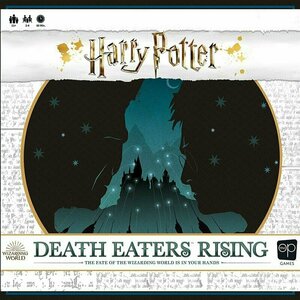
Harry Potter: Death Eaters Rising
Tabletop Game
Harry Potter: Death Eaters Rising captures the difficulties and terrors Harry Potter, Ron Weasley...
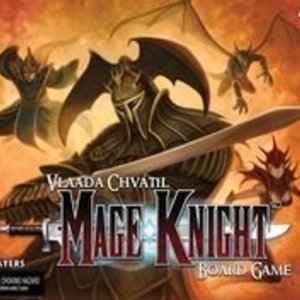
Mage Knight Board Game
Tabletop Game
The Mage Knight board game puts you in control of one of four powerful Mage Knights as you explore...
Boardgames RPGgames
